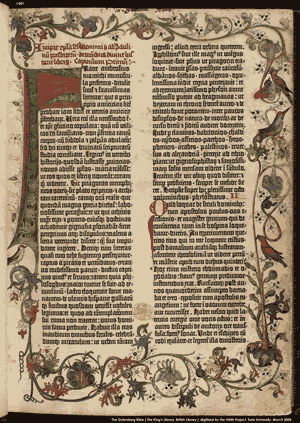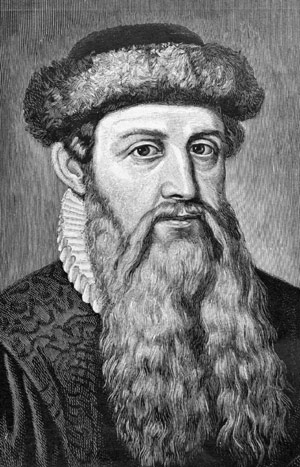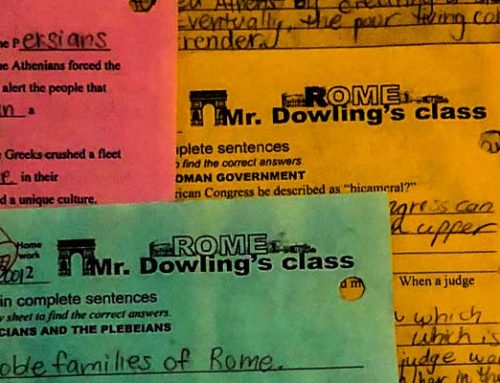A good cook can take leftovers and turn them into a delicious meal. Like a good cook, Johann Gutenberg took what had already been discovered and created a small invention that changed history. Gutenberg created a machine that allowed him to move small blocks of letters so that written material could be printed and mass-produced. Few people outside the clergy could read before Guttenberg invented the printing press, but once books became less expensive, literacy spread through Europe.
Block printing existed long before Gutenberg. The Chinese had been carving wood blocks to print books as early as 868, but their process had one major drawback; a new set of woodcuts had to be made for each book. Producing one book was difficult; producing many books was impractical.
Writing ink dates from about 2500 bc in Egypt and China. Earlier cultures took soot from fires and mixed it with sap. Later civilizations used the dark blue indigo plant. Gutenberg used an oil-based printing ink that would last longer than other inks used in his time.

Gutenberg_Bible
A page from the Gutenberg Bible.
We don’t know much about Gutenberg because he was not famous during his lifetime. He was born in Germany about 1400 and worked as a goldsmith. In 1448, Gutenberg developed engraved signatures for each number, letter, and punctuation mark. He then built the molds to hold the signatures in place and borrowed money to purchase a press. Gutenberg published the first mass-produced book: a 1,282-page Bible. To this day, more copies of the Bible have been printed than any other book.
Copies of Gutenberg’s invention spread throughout Europe, but the German goldsmith did not get rich from his invention. Patents did not yet exist, so anybody could build a printing press without compensating Gutenberg for his inspiration. Some religious and government officials denounced the invention of printing because they feared it would spread deviant ideas. But they were a minority. By 1500 there were 1,700 printing presses in Europe. The presses had already produced about 20 million volumes of 40,000 different books.

Johannes_Gutenberg
Johannes Gutrenberg (c. 1400 – 1468) was a introduced printing to Europe with the printing press. His movable type started the literacy revolution and changed the course of history.
Resources
Download this lesson as Microsoft Word file or as an Adobe Acrobat file.
Listen to this lesson. (mp3)
Mr. Donn has an excellent website that includes a section on the Renaissance.

A printing press




